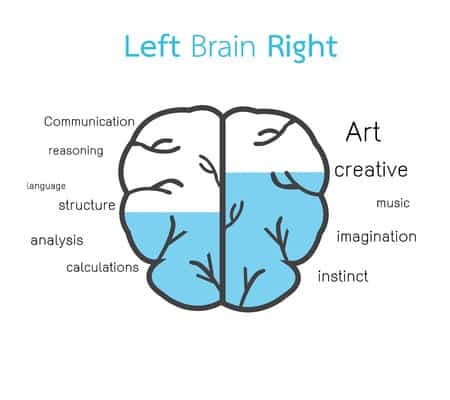A 3-Step Process To Go From Meeting Fatigue to Meeting Magic

I work with a lot of highly analytical and smart people. (If you’re one of my past or present clients reading this – yes I mean you!) And one of their big frustrations is meetings!
Whether it’s the popular one-on-one or the full team meeting, what initially felt useful can sometimes feel like it’s dragging on, taking too much precious time away from the “real work,” and sapping your energy. And adding insult to injury, some meetings can actually feel like they’ve set your team back two steps as you revisit topics that had already been decided.
 Raise your hand if you’ve even felt after a meeting that it was a wasted hour (or more) of your life. . . okay, you can put your hand down now!I’ve recently been certified in the NBI thinking styles assessment. This assessment identifies which parts of your brain you are most comfortable using, and as a result, how you prefer to think about and break down problems and solutions. Of course, most of us have learned to “flex” in our work environment; you’ve probably developed the ability to process information in your less preferred styles as well. But generally speaking, we all have our “go-to” questions and ways of thinking that feel more natural to us, no matter the environment.I’ve developed this go-to guide & cheat sheet for how meetings can feel depending on your preferred thinking style. Keep in mind that you can have two or more preferred thinking styles. See where you recognize yourself.
Raise your hand if you’ve even felt after a meeting that it was a wasted hour (or more) of your life. . . okay, you can put your hand down now!I’ve recently been certified in the NBI thinking styles assessment. This assessment identifies which parts of your brain you are most comfortable using, and as a result, how you prefer to think about and break down problems and solutions. Of course, most of us have learned to “flex” in our work environment; you’ve probably developed the ability to process information in your less preferred styles as well. But generally speaking, we all have our “go-to” questions and ways of thinking that feel more natural to us, no matter the environment.I’ve developed this go-to guide & cheat sheet for how meetings can feel depending on your preferred thinking style. Keep in mind that you can have two or more preferred thinking styles. See where you recognize yourself.
Dr. Jo’s Go-To Guide To Meetings For Every Thinking Style:
(R=Right Brain, L = Left Brain)

R1 (Big Picture Thinkers): People who gravitate to R1 thinking styles tend to be people who like to step back and look at the big picture. These are also people who love to generate new ideas and options and can see multiple solutions for every problem. When R1s attend meetings, they love to step back from the problem and brainstorm lots of solutions. For R1s the fun of the meeting is not necessarily making a decision and moving forward, but instead coming up with lots of new ideas and possibilities.
L1 (The Analyzers): People who gravitate to L1 thinking styles tend to be people who like to analyze data and understand why something would or wouldn’t work. These people love to bring in research and proven methodologies. They want to weed out the options that don’t seem as reliable, and focus on why an idea would be successful or not. When they get to meetings, they want people to validate their assumptions and ideas with data, and hear all the evidence for and against different ideas. For L1s the fun of the meeting is keeping the team on track to pick an optimized solution that has the biggest chance of success.
R2 (Interpersonal Connectors): People who gravitate to R2 thinking styles tend to be people who like to step back and think about which people need to be involved. These are people who love to work with others to reach new solutions and consensus. When R2s get to meetings, they want to make sure that the solutions that are being generated work for most people and have a wide backing. They are also the people who “make sure you have to right people on the bus” to implement the solution, as Jim Collins recommends. For R2s the fun of the meeting is in building their relationships and supporting their co-workers.
L2 (The Implementers): People who gravitate to L2 thinking styles tend to be people who love to implement the solutions and make sure that all the “nitty gritty” has been worked out for faster movement forward after the meeting. These are also people who when given a mandate, are great at mapping out all the steps from here to there and making it happen. When L2s get to meetings, they want to figure out what would need to be done to implement each solution and how easy or hard that would be. For L2s the fun of the meeting is in creating the plan and accountability to make sure things are actually “getting done.”
So now that we know the players – what’s to be done?
 Dr. Jo’s 3-Step Preparation for Painless Meetings:
Dr. Jo’s 3-Step Preparation for Painless Meetings:
Step One: See if you can figure out which thinking style, or combination of thinking styles you are from the descriptions above. Once you know your thinking style, can you come up with what information you need to leave the meeting with to be happy with the outcome (e.g., new ideas, a concrete plan of action, who to work with, or a thorough analysis of the options)?
Step Two: See if you can identify who are you meeting with, and what thinking preference they might have. In the beginning it’s much easier to practice this with one-on-ones so there’s only one other person to consider. Once you consider their preference, take some time to determine what information they would want to leave your meeting with to feel good about the outcome.
Step Three: Take time to plan ahead. Once you know the type of information you want to leave the meeting with, you can come in prepared to ask for what you need and return to those desired outcomes if necessary during the meeting. Once you’ve mapped that out, take time to think how you can help your meeting partner(s) leave with the type of information they might want from the meeting. Perhaps set aside time for brainstorming even if you don’t love it. Or research what data you can bring to the table that can support a clear decision.
I find that this kind of preparation might seem incredibly obvious as you’re reading it but be honest, how much time do you truly take to prepare it ahead of time. If you can truly consider who you are working and meeting with – perhaps you can design a streamlined meeting that meets both your needs and theirs.
So I’m curious – what type do you think you are? Comment and let me know what type resonates with you and why!